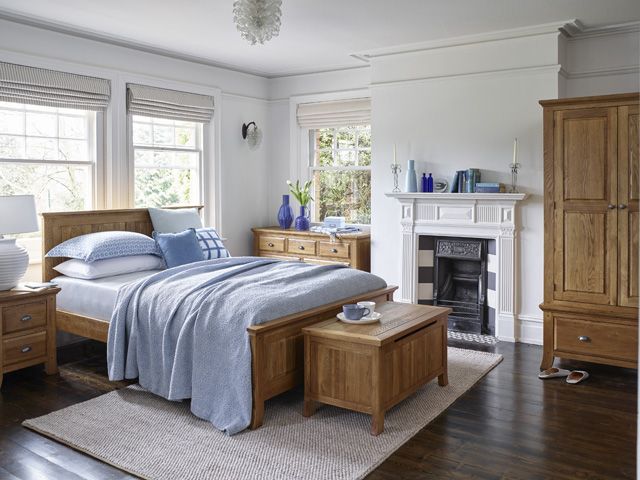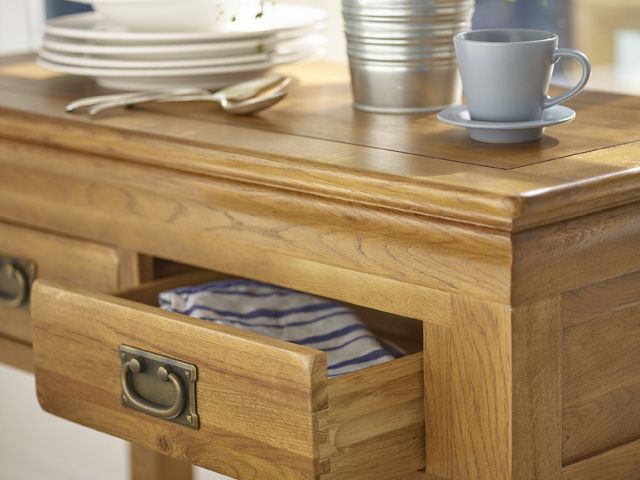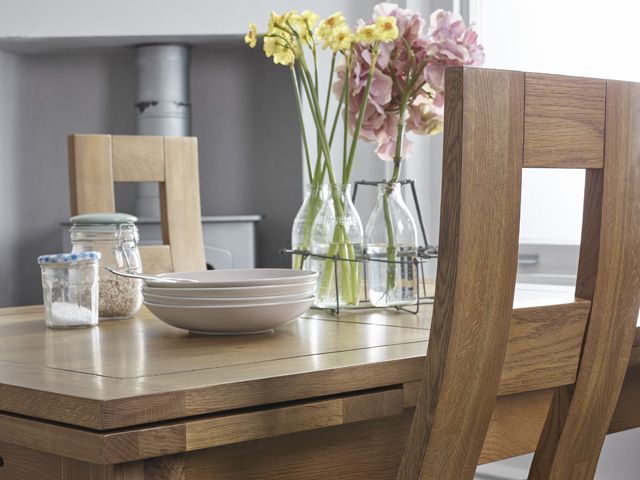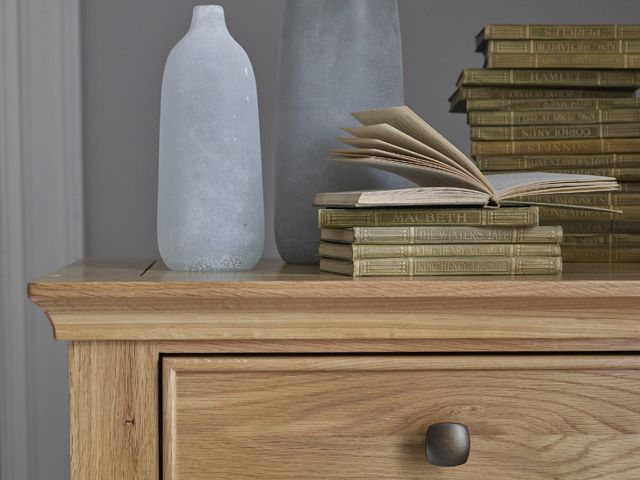
How to care for and protect oak furniture
From how to clean oak to where to position wood furniture in a room, read our complete guide to looking after oak furniture, from the experts at Oak Furniture Land.

Image: Oak Furniture Land
Versatile, eternally stylish and bringing a warmth and depth of texture to your home that other materials can’t, it’s easy to see why so many of us fall in love with the natural wonder of hardwood.
Renowned for its strength and durability, choosing high quality solid oak furniture that’s been beautifully crafted is perfect if you’re looking for an investment that will stand the test of time.
A living material, with a character all of its own, natural imperfections in the wood only enhance the look of your furniture: knots, variations in the grain, texture and shade of the timber are a beautiful reminder that each piece is unique.
Playing host to some of life’s most precious moments, whether it’s an oak dining table, a cot or a sturdy welsh dresser at the heart of your home, here are our room set sponsor, Oak Furniture Land‘s top tips and expert advice on how to look after oak furniture to ensure treasured pieces can be passed from generation to generation.
Buy furniture crafted from kiln-dried wood

Image: French Farmhouse rustic solid oak console table, Oak Furniture Land
Timber that’s been newly sawn has a very high moisture content – approximately 50% of its weight is water.
Opting for oak that has been carefully kiln-dried will ensure that the humidity levels are just right and means you won’t run the risk of having furniture that shrinks and cracks (too little moisture) or expands and warps (too much moisture).
Regular waxing

Image: Rustic solid oak dining set by Oak Furniture Land
Don’t worry… it’s less painful than it sounds! Preserving the natural beauty and integrity of oak is easy.
While everyday wear and tear might take its toll on MDF or wood veneer (both are prone to chipping or peeling), solid hardwood is much more robust. Waxing your furniture regularly conditions the timber and creates a hardwearing, protective seal that better repels water and retains the wood’s optimum moisture levels.
A natural wax, like Beeswax, lets the beauty of the oak grain speak for itself but if you are applying a wax or polish for the first time it’s always a good idea to sample it on the underside of the furniture so you can make sure you like the finish. Any new solid hardwood furniture should be treated straight away to help it adjust to the atmosphere in your home. After this, for regular upkeep, simply continue to nourish with wax every season.
How to wax wood furniture
- Before treating, furniture surfaces should be dust-free, clean and dry.
- Using a soft cloth, apply the wax sparingly, moving in the same direction as the grain to avoid creating air pockets. For a continuity of colour and to minimise streaking, blend evenly removing any excess as you go.
- Wait five minutes to allow the wax to dry and then, using another clean, dry cloth, buff in the same direction as the grain until you have a finish with the sheen you want.
What should you use to clean oak furniture?

Image: Classic natural solid oak chest of drawers, Oak Furniture Land
Stick to a simple damp cloth to wipe and dust the surface of your furniture; cleaning products that aren’t specifically designed to be used on hardwood are likely to damage your furniture’s finish.
Keep coasters and placemats handy. Red wine and coffee are the usual culprits for staining and because oak is porous, any spillages will be easily absorbed by the wood.
Immediately blot with a clean damp cloth but for more stubborn marks, ask for help from a professional furniture restorer who’ll be able to work their magic.
What should you consider when positioning your furniture?
While in regular daylight oak naturally darkens or “mellows”, placing it in direct sunlight will dramatically alter the colour of your furniture.
Occasionally rearranging any objects on furniture tops will mean more even wear and colouring. It’s also best to avoid putting solid oak in conservatories or directly in front of a radiator or air conditioning vents. Fluctuations or extremes in temperature will dehydrate the oak causing furniture joints to move apart.
Ensure there’s a gap of about 25mm between the back of your furniture and the wall so the air can flow evenly.
Finally, if you want to relocate your furniture, always lift it carefully so you don’t damage its structure and use felt pads on the feet to protect the base and any flooring.
Make sure you pop down to the Ideal Home Show (17th March – 2nd April) and check out our roomsets where Oak Furniture Land will be showcasing stylish oak furniture. We’re also giving Good Homes fans a special 2 for 1 Ideal Home Show ticket offer. Simply enter code GH241 at checkout.





